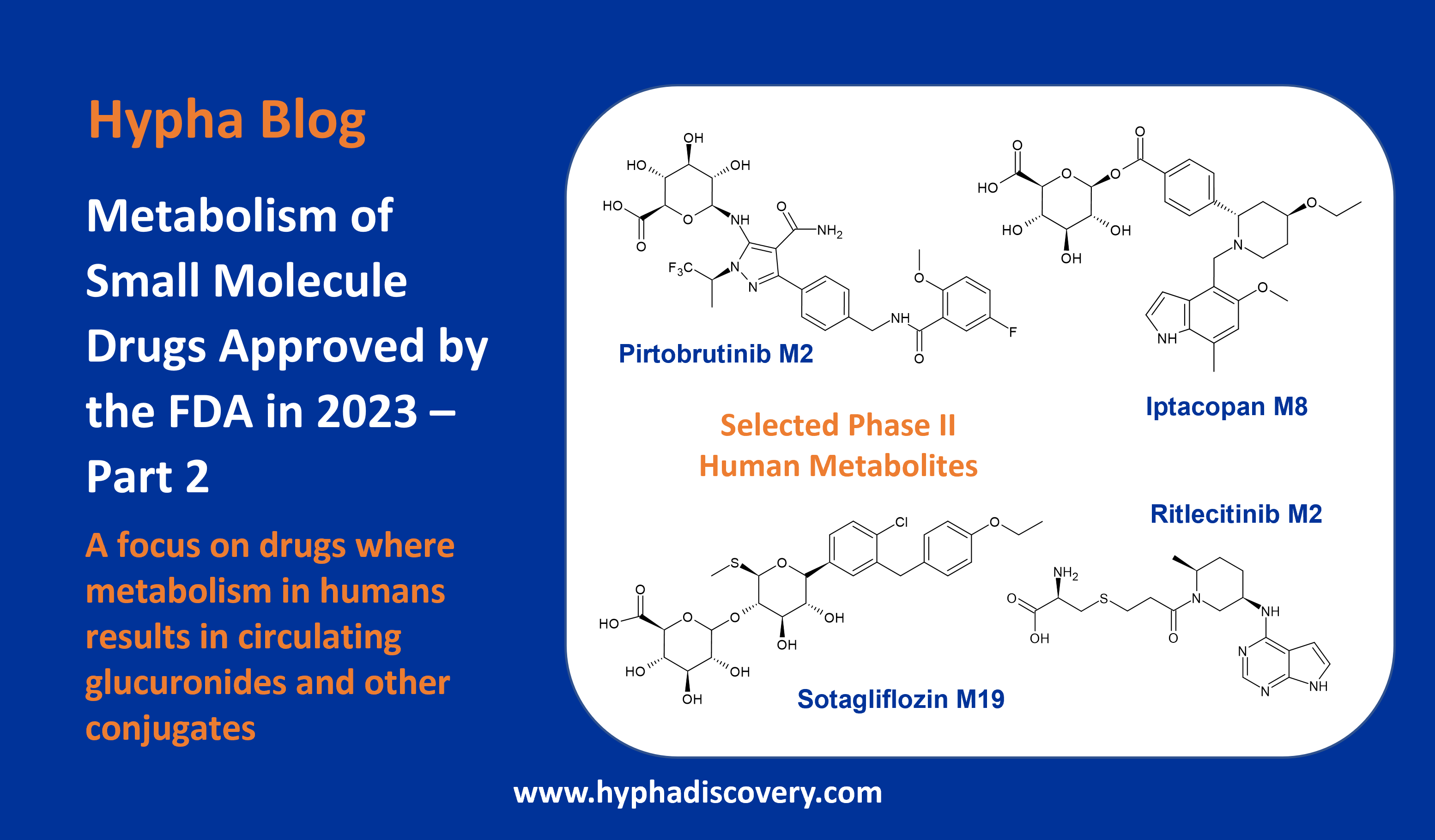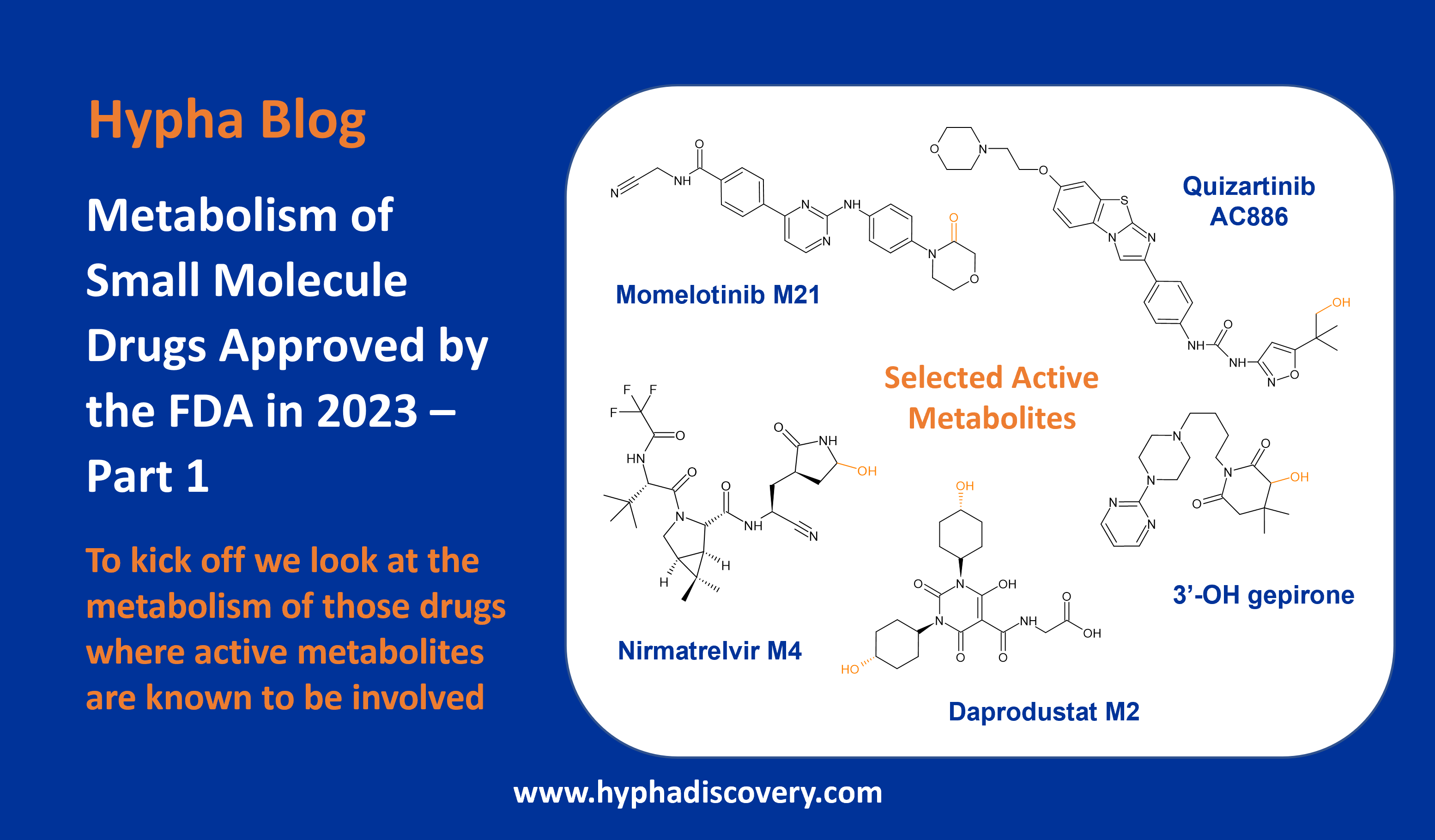Bioisosteres that influence metabolism
By Samuel Coe
The majority of reviews on the application of bioisosteres are focused on effects on potency. In this blog we look at how bioisosteres can alter metabolism of a drug.
The well-known examples of exchanging hydrogen for deuterium or fluorine are not discussed as there are many detailed reviews covering these topics.1,2
Rings of a new era
Phenyl rings are excellent building blocks in medicinal chemistry because they can be readily introduced synthetically, allowing rapid generation of SAR. Unfortunately, they often have poor ADME properties and are frequently replaced with bioisosteric groups. One reason for this is that monosubstituted phenyl groups, which commonly appear as terminal groups in drug-like molecules, harbour the potential for forming toxic metabolites.3 Typically a CYP mediated cascade (Figure 1) results from formation of an epoxide. Monosubstituted phenyl rings can then undergo multiple oxidations producing intermediates able to react irreversibly with nucleophiles such as DNA.3

Figure 1 Example CYP cascade producing electrophilic intermediates
There are some excellent examples of improvements to metabolic properties such as clearance by switching to other 6 membered aromatics. For example, Table 1 highlights how replacing electron rich phenyls with azines reduces the clearance, presumably by reducing susceptibility of the aromatic ring to oxidation.4 However, at the macro level, when GSK evaluated over 30 different terminal phenyl bioisostere molecular matched pairs from their collection, the average change in human liver microsomal stability was generally only modest.5

Table 1 – Change in rat in vivo clearance with phenyl bioisosteres
Another interesting example of a bioisostere influencing downstream metabolism is shown in Table 2. Lead compound 1a undergoes oxidative de-fluorination, an emerging pathway of interest with more CYP mediated reactions being recognised.6-7 Here oxidative de-fluorination led to time dependant inhibition of CYP3A4 and formation of glutathione adducts. Compound 1b was developed to counter this but the changes resulted in a higher intrinsic clearance, likely due to increased lipophilicity. As a result of the oxidative de-fluorination, replacing the remaining F-phenyl ring for an alternative that could influence the metabolic site was then a priority.7
Azine replacements resulted in unacceptable reductions in target affinity. However, saturated cyclic ethers proved to be successful replacements, with similar affinities and improved clearance values. Although acetal groups are typically acid sensitive, at pH 1, degradation was only seen after 48 h, and there was no significant degradation at pH 7 after several days.7

Table 2
Saturated cyclic ethers are part of the new breed of “non-classical” phenyl bioisosteres. Others that are gaining significant traction are highlighted in open source malaria literature. Dubbed the “affinity stones” these bioisosteres are seeing many more applications in drug discovery.8
Carboxylic acids – reducing reactive metabolites
Carboxylic acids are a useful motif in medicinal chemistry, however they are often metabolised to acyl glucuronides. It should be emphasised that not all acyl glucuronides are unstable or a concern, however formation of unstable conjugates that form covalent adducts with proteins have been implicated in rare cases of drug induced liver injury (DILI). Hepatotoxicity may result from glycation of acyl migration isomers, or by transacylation (Figure 2).9

Figure 2 Adapted from “Carboxylic Acid Bioisosteres in Medicinal Chemistry: Synthesis and Properties” [ref 10]
To reduce the chance of these toxic events, bioisosteres of carboxylic acids are often deployed by medicinal chemists. The extremely detailed “Structure Property Relationships of Carboxylic Acid Isosteres” by Ballatore et. al. provides general trends for the effect a bioisostere will have on membrane permeability, experimental logD and experimental pKa amongst others.11 While there are marketed drugs that contain carboxylic acid bioisosteres e.g. losartan, there is a general lack of examples that show exchanging a carboxylic acid for a bioisostere has resulted in removal of a potential tox issue.12
Walles et al. in fact point out that acyl glucuronide formation alone should not be assumed to be a causal factor in producing DILI.12 Indeed, other phase 2 routes from acidic drugs can result in more reactive metabolites, such as the formation of S-acyl CoA conjugates, which Bradshaw et al. point out has surprisingly received little regulatory attention.13
Amides – a common group developing uncommon solutions
Amide functional groups while present in a large number of drugs are labile to in vivo enzymatic hydrolysis, therefore, bioisosteric replacements that address this issue are of great interest to the medicinal chemistry world.

Figure 3 Comparing the duality of amides and triazoles
Replacing amide bonds requires extra thought because of the different confirmations true amide bonds can adopt. This is further complicated because an amide is both a hydrogen bond donor and acceptor (HBD/A). Addressing these two complications, 1,2,3-triazoles offer an excellent alternative to amide bonds. The advantage over other 5-membered heterocyclic replacements is that they can act as both HBD/A, while improving metabolic stability against hydrolysis and oxidation.
However, care must be taken to consider the 1,4 vs 1,5 substitution to correctly mimic the required E/Z isomer when trying to replace a carbonyl HBA interaction.14
One of the major early uses of this bioisotere is shown in the example below. Diazepam lactam is replaced with a 1,5 disubstituted 1,2,3 triazole resulting in the drug alprazolam. This replacement solved a metabolic problem associated with diazepam. The major circulating metabolite of diazepam, N-desmethyldiazepam is equipotent with the parent and has a half-life of 50-120 h, and is in fact a drug itself – nordazepam (Figure 4). Due to its long half-life, its occurrence as a metabolite is responsible for most cumulative side-effects of its myriad of pro-drugs when used continually at moderate-high doses.15

Figure 4
Alprazolam conversely is not extensively metabolised in humans with the 4-hydroxy and alpha-hydroxy metabolites occurring in plasma concentrations <4% relative to the parent, despite also being active metabolites (Figure 4). These are subsequently conjugated and excreted in the urine along with unchanged parent.16
Adding an additional aromatic ring is not always desirable or feasible synthetically. Fortunately, there are other amide bioisosteres available.14
Two commonly applied examples that can mimic the HBD/A charter of amides are carbamates and thio amides. A nice example of carbamates improving the metabolic stability of a compound is shown in Table 3. The truncated SP1-7 peptide had good activity but the initial pharmacophore led to high efflux and human clearance. Removing HBDs by addition of a carbamate led to the parent amide. This compound has improved human microsomal clearance and measurable permeability in vitro. When measured in vivo however, hydrolytic cleavage of the primary amide occurred in rats/mice but not in human plasma. Additional bioisosteres were synthesised replacing the carboxamide with hydroxamic acid, acyl cyanamide, acyl sulfonamide, acyl hydrazine, and 1,3,4-oxadiazole with many returning improved rat plasma stabilities.17

Table 3 Highlighting the HLM stability gained from carbamate
Thioamides are another example of readily accessible amide isosteres. Imparting different properties to the standard amide, thioamides have a longer C=S bond resulting in a weaker HBA, but with a shorter C-N bond leading to stronger HBD properties. Unfortunately, there are no examples of improvements in DMPK profiles with this isostere but it will be interesting to see how this develops as it retains the HBA/HBD character of amides.18
An emerging bioisostere that may provide a useful alternative to amides is the “CF3 amide” whereby a CF3 group replaces the carbonyl. The basicity of the NH is regulated by the CF3 group, however, any carbonyl HBA capabilities are lost which obviously makes it a poor choice for those that utilise the carbonyl for key interactions!

Figure 5
An example of the CF3 amide replacing an amide is the BACE-1 inhibitor shown in Figure 5. After hydrolytic cleavage, the parent amide releases a toxic aniline, therefore many of bioisosteres discussed so far would not have been appropriate as they too would release an aniline. The situation was complicated further as x-ray crystallography indicated the NH was required for interaction with a backbone carbonyl. In this instance the CF3 amide offered an excellent choice of bioisostere as the CF3 modulated the basicity of the NH allowing the key interaction to be maintained but prevented hydrolytic cleavage.19
No rules of thumb…
Phenyl, carboxylic acid and amide groups represent three very common functional groups that have well known issues around metabolism. We have highlighted several innovative methods for addressing these issues using bioisosteres. However, the literature shows that their application must be taken on a case-by-case basis, as currently there are no good “rules of thumb” for applying bioisosteres.
References
1 J. Med. Chem., 2018, 61, 14, 5822-5880 https://doi.org/10.1021/acs.jmedchem.7b01788
2 Future Med. Chem., 2019, 11, 16, 2039-2042 https://doi.org/10.4155/fmc-2019-0183
3 Chem. Res. Toxicol., 2017, 30, 1, 13–37 https://doi.org/10.1021/acs.chemrestox.6b00256
4 ACS Med. Chem. Lett. 2019, 10, 8, 1228–1233 https://doi.org/10.1021/acsmedchemlett.9b00274
5 Eur. J. Med. Chem., 2016, 124, 1057-1068 https://doi.org/10.1016/j.ejmech.2016.10.029
6 ACS Catal., 2022, 12, 1, 265–272 https://doi.org/10.1021/acscatal.1c05510
7 ACS Med. Chem. Lett., 2019, 10, 7, 1016–1019 https://doi.org/10.1021/acsmedchemlett.9b00235
8 J. Med. Chem., 2018, 61, 17, 7486–7502 https://doi.org/10.1021/acs.jmedchem.8b00295
9 J. Med. Chem., 2020, 63, 20, 11585–11601 https://doi.org/10.1021/acs.jmedchem.0c00746
10 J. Chem., 2022, 2090-9063 https://doi.org/10.1155/2022/2164558
11 J. Med. Chem. 2016, 59, 7, 3183–3203 https://doi.org/10.1021/acs.jmedchem.5b01963
12 Chem. Res. Toxicol., 2020, 33, 7, 1551–1560 https://doi.org/10.1021/acs.chemrestox.0c00131
13 Drug Discov., 2020, 25, 9, 1639-1650 https://doi.org/10.1016/j.drudis.2020.07.009
14 J. Med. Chem., 2020, 63, 21, 12290–12358 https://doi.org/10.1021/acs.jmedchem.0c00530
15 Pharmacogenomics J., 2002, 2, 243–258 https://doi.org/10.1038/sj.tpj.6500115
16 https://www.accessdata.fda.gov/drugsatfda_docs/label/2011/018276s045lbl.pdf
17 ACS Med. Chem. Lett., 2014, 5, 12, 1272–1277 https://doi.org/10.1021/ml5002954
18 Bioorg. Med. Chem. Lett., 2007, 17, 10, 2823-2827 https://doi.org/10.1016/j.bmcl.2007.02.055
19 Bioorg. Med. Chem. Lett., 2005, 15, 21, 4741-4744 https://doi.org/10.1016/j.bmcl.2005.07.071


